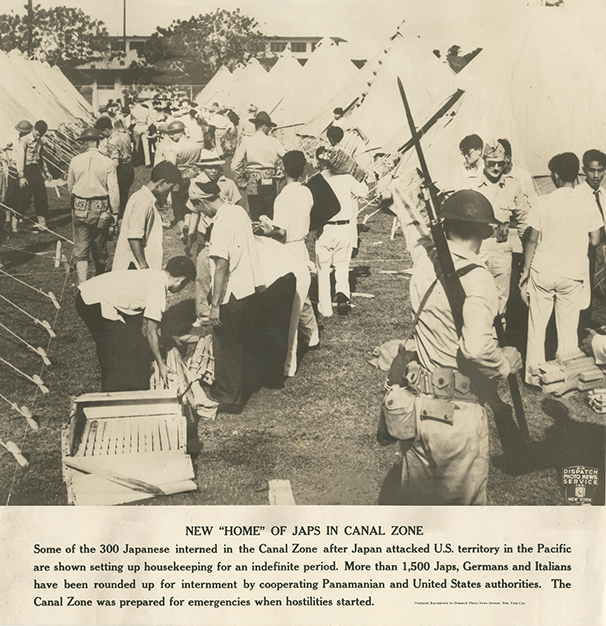Click to View Slide show
Threat of Japanese Attack
Wartime stereotyping was widespread in popular journals and magazines. Some were accounts of Japanese produced propaganda, while others were imaginative descriptions of a potential attack. Even health officials adapted advisories and equated good health with good defenses against the enemy.
The U.S. military created an internment camp in the Canal Zone just days after the Pearl Harbor attack. Fearing potential espionage and sabotage, they collaborated with various Latin American countries to gather people of Japanese ancestry. Up until that point, these individuals were community members and neighbors.
One true threat that was never realized was an attack by the I-400, a submarine specifically designed by Japan to bomb the Canal. The submarine was commissioned to carry and launch a bomber plane upon surfacing.
This online exhibition is based on the exhibition of the same name that was presented at the University of Florida George A. Smathers Libraries, March 7, 2020 - February 26, 2021.
Curated by Elizabeth A. Bouton with assistance from Elizabeth Bemis | Online design by Elizabeth A. Bouton
Student assistant curators: Summer Bias, Coral Dixon, Sean O’Dwyer, and Anna L. Weissman | Title design and other materials by Olivia Bowman
This exhibit was developed spring 2019 as part of the graduate Exhibitions Seminar in Museum Studies taught by Lourdes Santamaría-Wheeler. It was driven by student inquiry and has been an experiment in collaborative exhibition development processes.
Unless otherwise noted, all items are from the Panama Canal Museum Collection, Special & Area Studies Collections, George A. Smathers Libraries, University of Florida.








